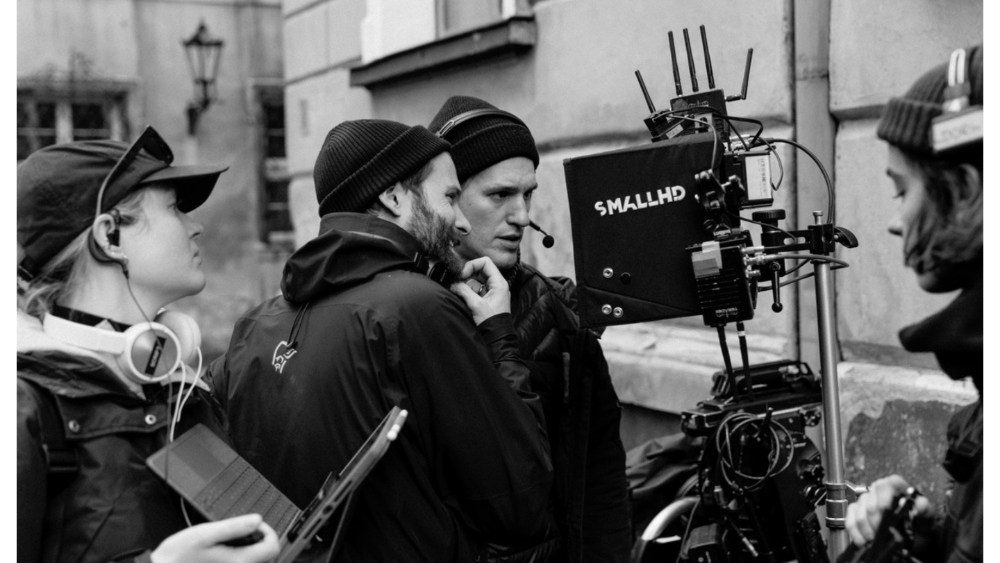When Polish photographer Michal Dymek first learn the script for this yr’s Picture Award winner “The Lady with the Needle,” he says he might instantly see the scenes in his thoughts’s eye: a shabby A desolate, gloomy picture of a Danish ghetto, the place sweatshop staff hunched over squeaking equipment throughout World Struggle I.
He noticed the basic display screen shot composition of a crumbling, claustrophobic house through which determined persons are trapped.
“It is superior, it is highly effective — like the perfect script I’ve ever learn,” Dymeck mentioned. He mentioned he knew instantly the movie needed to be in black and white. “I wished to create a time machine. All we find out about that point interval comes from black and white photographs, so we needed to seize it.
Dymek mentioned that in the course of the two years of preparation, because the manufacturing advanced right into a undertaking in Denmark, Sweden and Poland, it was determined to make use of Leica Hugo lenses to assist create the distorted impact of outdated glass to be able to preserve the authenticity of the archival footage from the early twentieth century. Employee life underneath captains within the industrial age.
The grim surroundings created naturally results in the story of a serial killer who guarantees reduction to girls who can not afford to lift their youngsters – however at a value.
The Lady with the Needle, written by administrators Magnus von Horn and Ryan Langbeck Knudsen, is predicated on true occasions from one in all Denmark’s darkest chapters in trendy historical past, telling the story of textile manufacturing facility employee Caroline. Story, issues progressively get into hazard, getting deeper and deeper.

“The Lady with the Needle”
Courtesy of Lucas Barker
By working with von Horn on Sweat, his 2020 story about obsession and social media mythology, Dymek mentioned the pair would as soon as once more discover the visible language to specific approaching ominous forces.
To seize the desolate, decaying world of Vic Carmen Sonne’s Caroline, Dymeke turned to filming areas not removed from the Lodz movie college the place he attended. He knew that there, in contrast to the clear, streamlined Copenhagen of at present, the cities there nonetheless had “all the things bent and damaged and falling aside,” similar to the Danish cities of a century in the past.
For the darkish, suffocating inside of the manufacturing facility, the house the place Caroline lives, and the room above the sweet retailer into which the evil nature leads her, Dymek and Van Horn determined to construct units that will enable for full management of the house. “It must be very slender, persons are squeezed and unable to maneuver, there is no mild, there is no air,” the photographer mentioned.
Dymek mentioned capturing with the Arri Mini LF and a shade sensor allowed them to make use of filters on black and white pictures to assist manipulate pores and skin tones and shadow spectra.
In addition they wished the world to really feel “disagreeable,” he added, “and to really feel sweat and smoke and steam.”
The tempo of the storytelling shall be regular and formal, Dymek mentioned, with static pictures and lengthy takes through which actors transfer by scenes with out modifying, a nod to Polish New Wave cinema – however added that they “do not need to be dogmatic. So. You comply with the emotion: lower if you really feel you need to lower, maintain the shot if you really feel you need to maintain.
Simply as essential, he mentioned, “let the actor lead the scene.”
Dymeke mentioned Thorne’s shifting moods as he oscillates between hope, concern and despair are sometimes captured with the slightest gesture seen in wide-angle pictures and emphasised by sudden modifications in mild, typically in moments of intense ache Overexposure.
On the identical time, the digital camera is as restrained as Caroline’s life, with little motion – typically pressured to keep away from letting glimpses of the twenty first century seep into the body.
Manufacturing designer Jagna Dobesz’s set could be very evocative of the period, permitting the viewers to viscerally really feel Caroline’s abject poverty whereas additionally feeling the breath of recent air introduced by her transient alternative to attain nice wealth.
Working intently with the house and the sunshine it accommodates was an essential a part of the job, Dymek mentioned. “Any white partitions had been instantly painted over,” he remembers, so Caroline’s pores and skin tone was all the time the lightest shade within the scene.
Dymek mentioned Trinde Residence because the vicious Dagmar, primarily based on the infamous Copenhagen serial killer, brings a special, extra complicated character and is extra technical than Thorne, who likes to play in Improvisation in entrance of the digital camera. This allowed the filmmakers to fastidiously choreograph the actions of the sweet retailer killer as she unleashes her lethal deception.
Impressed by darkish theater classics reminiscent of “Schindler’s Checklist” and “In Chilly Blood” in addition to German Expressionism, Dymeke and von Horn sought to pay homage to nice works that additionally ventured into locations of insanity, he mentioned, in creating psychological horror. Within the course of, “The Lady with the Needle”.
In the meantime, the surreal and sonorous soundscapes created by Kim Dalum, Morten Pilegaard and Oskar Skriver add a novel layer of the group’s personal manufacturing, placing a brand new stamp on established conventions.
Wanting again on the shoot now, Dymeck says, “I feel this film is a tribute to how the masters taught us to consider motion pictures.”

